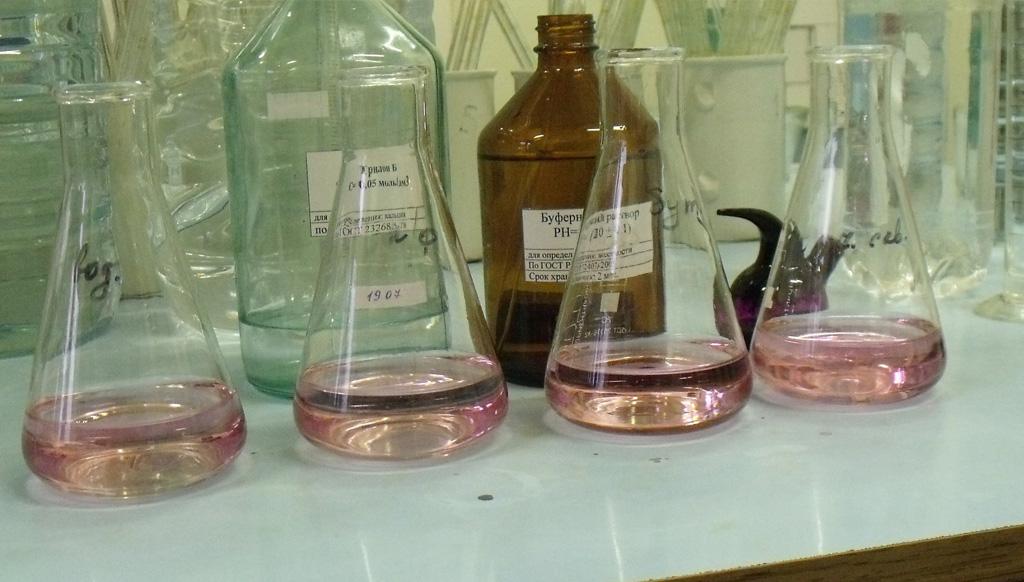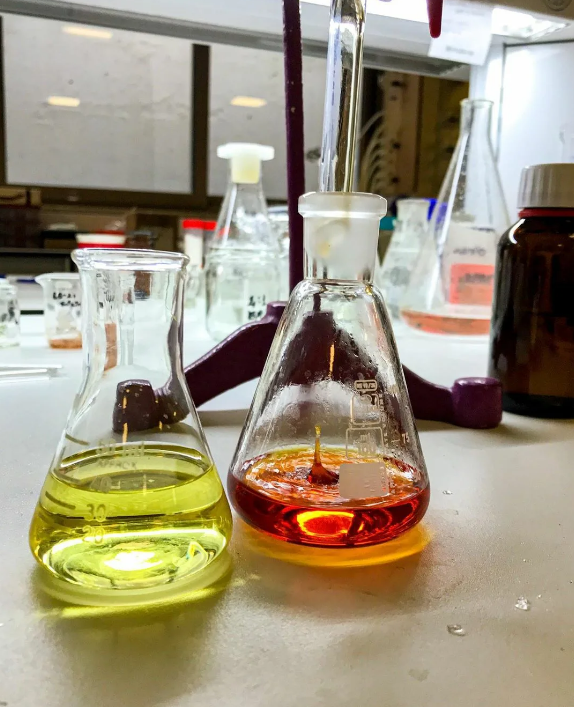
(1) Determination of Ag by direct titration
In an acidic water sample containing Ag+, ferric ammonium alum is used as an indicator and titrated with NH4SCN (or KSCN) standard titration solution. The first precipitated is the white precipitate of AgSCN. After the quantitative precipitation of Ag, the excess NH4SCN solution and Fe+ produce red The complex is the end point. The titration reaction and indicator reaction are as followsAg+SCN⇌AgSCN+(white) Km=1.07×10-12
Fe+SCN⇌FeSCN2+(red)
Everyone should pay attention to the measurement process: the first precipitated AgSCN precipitate has a strong adsorption effect, so some of the Ag is adsorbed on its surface, so it will cause the end point to appear prematurely, making the measurement result low and causing errors. Therefore, the solution must be fully shaken during the measurement to release the adsorbed Ag+ in time, so as to ensure the accuracy of the detection value.

(2) Determination of Cl, Br, I and SCN- by back titration method
Generally, when determining Cl in a water sample, first add a known excess of AgNO3 standard solution to the sample, and then use ferric ammonium alum as an indicator to back titrate the remaining Ag+ with the NH4SCN standard titration solution.Ag++Cl⇌AgCL Ksp=1.8×10-10
Ag++ SCN⇌AgSCN Ksp=1.07×10-12
Since the solubility of AgSCN is less than that of AgCl, after back titrating the remaining Ag+ with the NH4SCN standard titration solution to the stoichiometric point, a slight excess of SCN can interact with AgCl to convert AgC into Ag-SCN with less solubility:
AgCl+ SCNT=AgSCN+Cl
The conversion reaction of the above precipitation proceeded slowly, when FeSCN2+ red appeared in the test solution, with continuous shaking, the reaction would proceed to the right until equilibrium was reached. However, when the end point is reached, a part of the NH4SCN standard titration solution will be consumed. Therefore, in order to avoid the above error, usually after the AgCl precipitate is formed, a small amount of organic solvent, such as nitrobenzene or 1,2-dichloroethane 1~2mL, is added to make the AgCl precipitate surface covered with a layer of nitrobenzene and separate from the external solution. open. This prevents the conversion reaction between SCN- and AgCl, and improves the accuracy of the titration. It is also possible to boil the water sample after adding excess AgNO3 standard solution to agglomerate AgCl to reduce the adsorption of Ag by the AgCl precipitate. The precipitate was filtered off, washed with dilute HNO3, and then the remaining Ag in the filtrate was titrated with NH4SCN standard titration solution.



